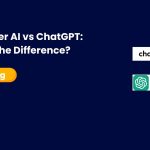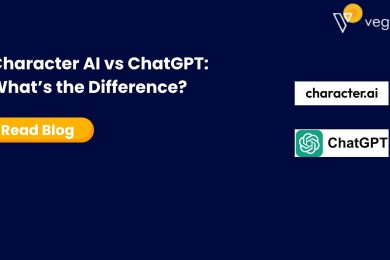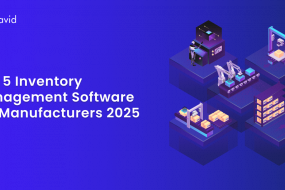
A mobile app powered by machine learning could help improve people’s lives in various ways. While developing such an app requires skill and expertise, focusing on user experience and value makes the task achievable. Building a seamless and impactful machine learning mobile app necessitates a fusion of user-friendly design and powerful algorithmic functionality. Balancing simplicity with robust machine learning capabilities ensures user engagement and effectiveness. This introductory overview explores the essentials of crafting a mobile app that seamlessly integrates machine learning, offering insights into creating an intuitive interface while harnessing the predictive power of algorithms for a compelling user experience.
Crafting an impactful machine learning mobile app necessitates a delicate fusion of powerful algorithms and user-friendly design. The journey begins by harmonizing sophisticated machine-learning capabilities with an intuitive interface, ensuring a seamless user experience. This introduction explores the foundational elements crucial for building a mobile app that effortlessly incorporates machine learning, emphasizing the significance of user-centric design and the integration of predictive algorithms. Striking the right balance between simplicity and robust functionality is pivotal, fostering user engagement while leveraging the predictive power of machine learning. Understanding the core principles behind creating an easy-to-use yet effective app lays the groundwork for an immersive and valuable user experience, ultimately driving engagement and delivering tangible benefits. This article discusses creating a friendly, beneficial ML mobile application.
Prioritizing User Needs
The needs of users should always come first when designing any technology. It is essential for a machine learning mobile app to identify apparent user problems or tasks the app could help with. Convenience, education, and assistance motivate people to adopt new technology. Some examples of user needs an ML app may fulfill include helping farmers monitor crop health, assisting doctors with diagnoses, or aiding students with homework. Once critical user needs are recognized, focusing development on meeting those needs in simple, tangible ways leads to lasting value and adoption.
The user should always be the primary focus when developing a machine-learning mobile app. The developers must identify critical daily problems or tasks that users need help with. This could be managing their schedule, tracking their expenses, monitoring their health goals, or learning a new language. Once the critical user needs are known, the whole app development process revolves around effectively meeting those needs. User research through surveys and interviews provides valuable insights into pain points and how an ML solution could help. By truly understanding the users, their behaviors, and motivations, the developers can create an experience that people will want to use. This approach leads to higher adoption rates, better retention, and more valuable data for the machine learning models over time.
Gathering Relevant Data
Ample relevant data must be collected. This data collection should align with addressing essential user needs. Users can voluntarily and anonymously contribute valuable data through the app’s intended functions. For example, a farming app may collect contextual photos of fields and crop symptoms over time. Care must be taken to explain data usage policies transparently and respect user privacy. Incentives like insights or gamified tasks can encourage helpful, consensual information sharing to power increasingly valuable predictions.
For the machine learning algorithms to work well, they require a large amount of good-quality data related to the app’s purpose. The developers must design intuitive ways for users to contribute their relevant data via e everyday app interactions. For example, a health app could collect daily diet, exercise, and mood entries that help identify patterns. An education app might allow students to upload photos of solved math problems. The contributions must be accessible and relevant to the tasks people already perform. The data collection should also have clear user benefits and be optional with privacy in mind. Positive reinforcement techniques can motivate helpful data sharing for better individual and collective results.
Selecting Appropriate Algorithms
Given the app’s goal and available data, deciding which machine learning algorithms to use becomes crucial. Deep learning methods tend to perform well for classification or prediction tasks on visual or language data. But simpler algorithms may work better for smaller or noisier datasets. Experiments must be run to evaluate different models and choose the approach that produces the most accurate and reliable results. As models improve through ongoing data collection, their algorithms may also be refined. Regular testing ensures the app provides value as its machine learning underpinnings advance.
The choice of algorithms is significant for a machine learning mobile app to be effective. The developers must evaluate the available data sources, sample size, noise levels, etc, to select suitable methods. Some common choices for image, text, or time-series data include convolutional neural networks, recurrent neural networks, or random forests. More straightforward techniques like K-nearest neighbor or support vector machines may perform better for small datasets. Prototyping is essential to compare how different algorithms handle the unique dataset characteristics. As more high-quality data becomes available over time, the models can upgrade too. This iterative process helps continuously optimize the learning capabilities based on fundamental user interactions and data.
Building Intuitive Interfaces
Once underlying machine learning models are established, the focus shifts to making the mobile app interface seamless. Visuals, explanations, and interaction flows must be optimized on a small screen for quick understanding and task completion. Features like image recognition could be made engaging through simple tap-based inferences. More complex diagnoses or predictions may require multi-step guided workflows. Feedback from beta testers aids in further refining the interface for universal usability. Accessibility standards must also be followed to empower all users.
Developing an intuitive user interface is vital to encourage engagement with the app’s machine-learning capabilities. For small screens, visuals, interactions, and feedback must be clear, simple, and contextual. Features like visual search could guide users with step-by-step instructions. More complex predictions may require multi-stage workflows with explanatory in-between content. Usability testing is essential to identify pain points, understand mental models, and improve overall learnability. Accessibility standards help people of all abilities enjoy the benefits. A balance of minimalism with self-explainability ensures new and experienced users stay confident in the app’s capabilities.
Providing Contextual Help
User assistance goes a long way toward building confidence in an ML app’s abilities. Context-specific guidance can be offered at each step to clarify the task and the app’s role. On-screen messages, tooltips, or a help icon provide just-in-time clarification for efforts. The app may also suggest additional relevant information sources the user can explore. Periodic overview tutorials maintain familiarity for occasional users. An email support channel and app updates address evolving questions. Such support creates a sense of reliability and compounds the benefits users derive from each interaction.
Guidance embedded within the app experience builds trust in the machine learning models and comfort with the interface. Context-specific tips at each step clarify how to complete tasks and interpret results. Tools like pop-up definitions, in-app messages, or tutorial indicators provide on-demand explanations. A help desk also allows for resolving issues. Periodic tutorial resources maintain familiarity for occasional users. Such just-in-time and always-on support creates a seamless, dependable feel, empowering independent use of advanced features. It’s especially valuable for apps tackling complex topics or those used in high-stakes scenarios.
Cultivating Positive Feedback
Gathering user feedback presents opportunities for continuous improvement and growth. Short in-app surveys post certain activities invite ratings and open comments—those who take the time to provide input stand to gain rewards like exclusive tips. Anonymous crash logs and usage analytics also give clues to glitches or underserved areas of need. Enhancements are planned by weighing feedback against resourced and prioritized user goals. Promoting case studies highlighting the app’s positive impact on people’s lives further inspires beneficial engagements and advocacy. Constant feedback orientation futureproofs technology for community benefit.
Post-task surveys and interactive feedback widgets invite users to share ratings, thoughts, and new ideas. Incentives motivate participation to help improve the app. Meanwhile, crash reports and analytics also transparently reveal glitches or underserved needs. Enhancements then factor in both opportunities and constraints. Case studies celebrating real user impact inspire continued buy-in. With open communication established, people feel involved in maximizing community benefits over time through collaborative innovation. Constant feedback orientation helps technology sustain serving user needs sensitively into the future.
Sustaining with Care
While machine learning models scale independently, maintaining an active mobile app requires ongoing commitment. Planned efforts sustain app convenience, security, and relevance. New data sources integrating into the ML backend keep predictions current. Bugs get fixed promptly through a streamlined process. Performance gets optimized regularly to uphold smooth experiences even with more complex capabilities. In-app announcements of substantial updates build looks anticipation. Community support forums help interested users stay engaged, too. Such maintenance creates lasting usability and permits focus on new ways of enhancing people’s lives through continued technological progress.
While machine learning models update autonomously with new data, maintaining an actively developed mobile app requires ongoing commitment. Scheduled efforts sustain convenience, performance, security, and relevance as needs evolve. Testing comprehensively addresses bugs, and experiences stay seamless across platforms. The app user community also engages through support forums, release notes, and optional educational resources. Consistent maintenance and community cultivation uphold long-term usability, utility, and positive impact. It allows continued refinement of advanced algorithms to empower people through intuitive, helpful technology experiences most effectively.
Conclusion
Thus, developing a practical machine learning mobile application empowers positive change when the user needs to guide every aspect from concept to product evolution. Continual improvement through community involvement then sustains long-term benefits for all. With careful planning and execution, intuitive, helpful apps can bring machine learning closer to people. Crafting an easy yet powerful machine-learning mobile app converges on user-centric design and algorithmic prowess. The journey toward an effective app culminates in a seamless marriage between user experience and sophisticated ML functionalities. Ensuring simplicity in navigation and interaction fosters user engagement, while the app’s underlying algorithms should deliver accurate and actionable insights.
Moreover, the iterative development process, encompassing user feedback loops and continuous enhancements, fortifies the app’s effectiveness. Striking a balance between simplicity and functionality remains pivotal, as an app should empower users without overwhelming them with complexities. Furthermore, addressing privacy and data security concerns is a cornerstone of trust in the app. Upholding transparency and implementing robust security measures instills confidence in users, fostering sustained app usage and loyalty. Ultimately, the success of a machine learning mobile app hinges on its ability to seamlessly integrate sophisticated algorithms into a user-friendly interface, providing meaningful value to users while prioritizing their ease of use and privacy. This amalgamation propels the app toward efficacy, ensuring it becomes an indispensable tool in users’ lives, driving engagement and delivering tangible benefits.











